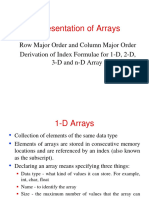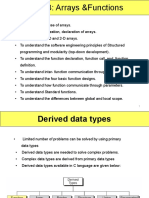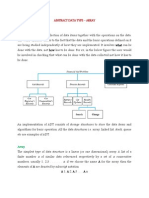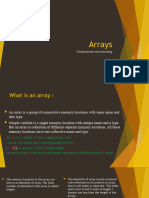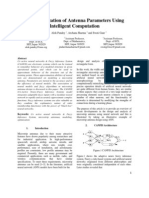0% found this document useful (0 votes)
24 views6 pagesArray
An array is a collection of items of the same type stored in contiguous memory locations, with elements accessed via zero-based indexing. There are three main types of arrays: one-dimensional, two-dimensional, and three-dimensional, each allowing for random access of elements. The document also covers array declaration, memory allocation, and methods for calculating the address of elements in both one-dimensional and multi-dimensional arrays.
Uploaded by
Lakshmi Narayana ReddyCopyright
© © All Rights Reserved
We take content rights seriously. If you suspect this is your content, claim it here.
Available Formats
Download as DOCX, PDF, TXT or read online on Scribd
0% found this document useful (0 votes)
24 views6 pagesArray
An array is a collection of items of the same type stored in contiguous memory locations, with elements accessed via zero-based indexing. There are three main types of arrays: one-dimensional, two-dimensional, and three-dimensional, each allowing for random access of elements. The document also covers array declaration, memory allocation, and methods for calculating the address of elements in both one-dimensional and multi-dimensional arrays.
Uploaded by
Lakshmi Narayana ReddyCopyright
© © All Rights Reserved
We take content rights seriously. If you suspect this is your content, claim it here.
Available Formats
Download as DOCX, PDF, TXT or read online on Scribd
/ 6




































